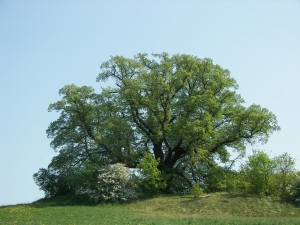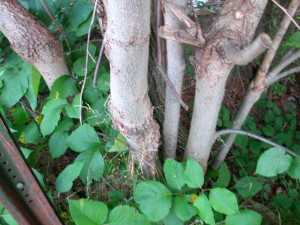 The tree goddess this week is the Latvian Laima (pronounced like the first word in “lima bean”). Her Lithuanian name is Laime. Be careful not to get her confused with the fairy goddess Lauma or the Greek Lamia.Laima is associated with many trees, but especially the linden; many birds, but especially the cuckoo; and many animals, but especially the cow. Laima is the goddess of birth, fertility, fate and prosperity — goddess qualities that seem to go together. Laima measures the length of the day, the length of a lifespan, the length of a spell of good luck. I have a mental picture of her flying around with a wooden ruler measuring things. (“Baby girl, you are going to be this tall.”)
The tree goddess this week is the Latvian Laima (pronounced like the first word in “lima bean”). Her Lithuanian name is Laime. Be careful not to get her confused with the fairy goddess Lauma or the Greek Lamia.Laima is associated with many trees, but especially the linden; many birds, but especially the cuckoo; and many animals, but especially the cow. Laima is the goddess of birth, fertility, fate and prosperity — goddess qualities that seem to go together. Laima measures the length of the day, the length of a lifespan, the length of a spell of good luck. I have a mental picture of her flying around with a wooden ruler measuring things. (“Baby girl, you are going to be this tall.”)
A branchy linden tree grewIn my cattle stall.This was not a linden tree,This was Laima of my cows.
Laima produces goats and sheep from her other trees:
All roadsides were covered with Laima’s trees:From a birch a ewe was born,From an aspen-tree, a little goat.
It is common in Euro-shamanism for land animals to have a bird form. Here we have sheep and goats with tree forms.Of course Laima also measures the length of a woman’s pregnancy and presides at the birth of children. She governs the bathhouse and sauna where Latvian women traditionally gave birth. In this role she takes the form of a woman with braided hair bearing linden branches.
Why so swift Mother LaimaWith linden twigs in your hand?To still the tears of a young brideWho came last year to our land.
Laima can appear as one goddess, three goddesses, or as many as seven. In various aspects she may be given different titles, such as “Cow Laima” or “Fate Laima.” This is interesting in the context of the linden tree, because its trunk often looks like it has multiple trunks fused together. The American Basswood has several distinct trunks rising from a single base. The linden tree exemplifies the idea of the goddess who is many and one.
